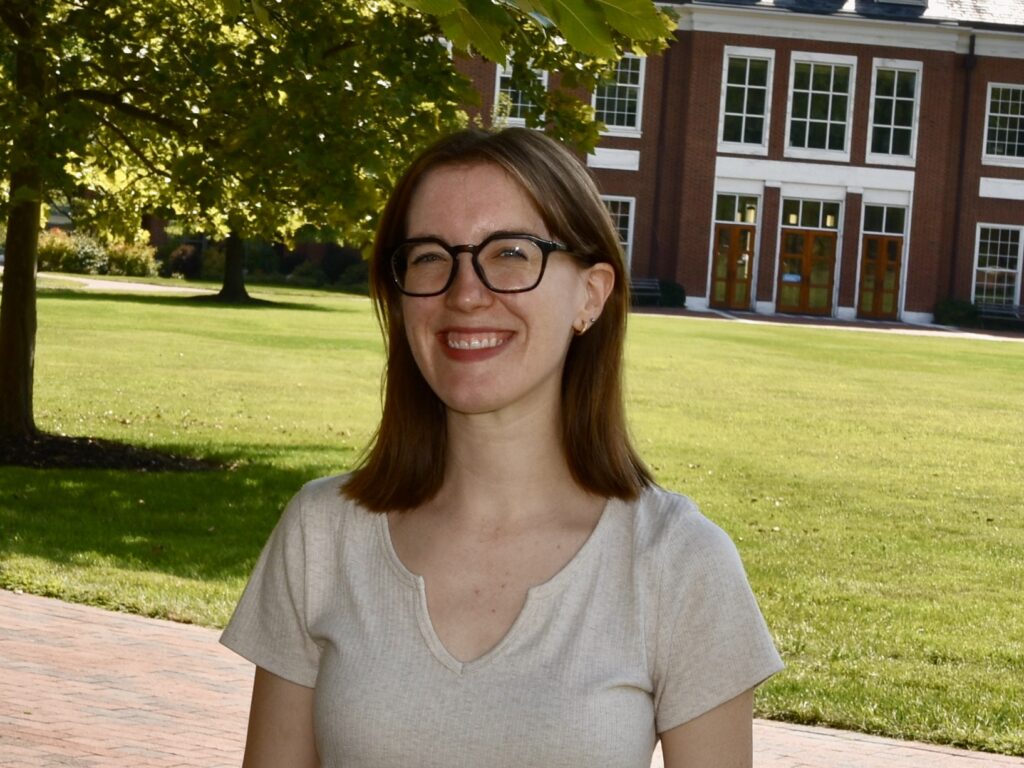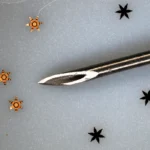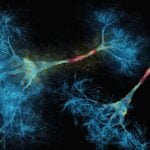How a passion for science led to research in real-time health monitoring

When Emily Helm was a biochemistry undergraduate student at the University of Central Arkansas, she was always fascinated by the creative and cutting-edge research at Johns Hopkins University. She knew she wanted to continue her graduate education at Hopkins when she completed her undergraduate degree but was worried that attending was unattainable for her.
Determined to attend her dream school, Helm knew she needed more research experience to increase her chances of getting accepted to Johns Hopkins. While at UCA, her research advisor and professors challenged her academically and to pursue her own scientific interests. She spent hours speaking with them and other researchers about exciting scientific advancements and the progress of their research. Helm’s confidence grew from these conversations and relationships. They made her feel like she belonged in the scientific community and was capable of pursuing scientific research. After graduation, she participated in a postaccalaureate program at the National Institutes of Health. There, she learned she wanted to do research that bridges the gap between chemistry and biology. Specifically, she became interested in research that sought to understand the molecular mechanisms guiding human health.
Helm’s efforts paid off and she is now a fourth year PhD student in Rebecca Schulman’s lab. Helm and Schulman, core researcher at the Institute for NanoBioTechnology and associate professor of chemical and biomolecular engineering, are creating sensors from nucleic acid circuits that can be used in scientific research, medical treatments, and more to give results in real-time.
What are you researching?
I am engineering a resettable molecular computation circuit driven by coupled transcription and degradation of RNA. Essentially, I am creating a type of software made of DNA and RNA that can detect biomolecules in real-time. My work involves finding a perfect balance of RNA production and RNA degradation. RNA is synthesized by T7 RNA polymerase, which is infamous for having off-target activities. RNA is degraded by three specific RNases, so I need to measure the activities of each of these RNases and determine the concentrations I need to counteract the activity of T7 RNA polymerase. I discovered that two of these three RNases weren’t acting on the RNA in the way that we had modeled, so I wrote a new code to capture the actual degradation pattern.
What are the challenges to your research?
Trying to get biological processes to work in a synthetic environment is quite challenging. Namely, getting predictable enzymatic activity has been most challenging. Currently, I’m struggling with creating an assay that measures the activities of these two RNases, so it has been difficult to find the right concentrations I need to counteract the activity of T7 RNA polymerase. Additionally, every time I open new enzyme tubes, the activity is going to be slightly different, which adds to the challenges of standardizing enzyme concentrations. Luckily, I have the support of collaborators and others in my lab to troubleshoot my experiments.
What are the potential applications of this research?
Many human health-related research questions could be answered with more sensitive biosensors. Imagine having a wearable device with this software that can detect real-time levels of virus particles in the air. The device could notify the user when they are in an area with high levels of viruses and notify them again when they are in an area with safe levels. Another application could be a patch that is placed on a wound to track inflammatory responses. This information can inform medical professionals when to administer medication or track the progression of healing. Molecular circuits could also be used to detect water contaminants in municipal water supplies or virus particles in wastewater over time to provide a more robust dataset for environmental scientists and epidemiologists. I hope that my research will aid in making a real-time biosensor that can make a difference in human and environmental health.
Are you involved in student groups on campus?
I am involved in the ChemDNA and Chemistry Student Liaison Committee (CSLC) groups in the Department of Chemistry. In both groups, I help plan social events with the goal of creating a supportive community environment. ChemDNA focuses on academic and career advancement, as well as outreach that engages the Baltimore community. Our favorite annual event is welcoming the new Hopkins students at the beginning of the academic year. We also enjoy Safety Day, which is a collaboration with the Chemistry Student Safety Committee (CSSC). Many groups within and outside of the Chemistry Department gather to promote their groups and participate in safety-related activities like CPR certification and learning how to use a fire extinguisher. The CSLC is focused almost exclusively on fun. We have near-monthly happy hours where we gather to catch up and take a break from research. We are hoping to do more outreach in Baltimore in the coming year.
I am also involved in the Sustainability Leadership Council at Hopkins. Specifically, I am a member of the Green Lab working group to reduce laboratory waste on campus.
When you are not doing schoolwork and research, what do you do for fun?
In my free time, I’m thrifting or crafting. My craft of choice these days is crocheting. I also have a talent for fantasy leagues for The Bachelor and for sports I don’t routinely watch. I’ll happily watch any sport if I’m with friends who enjoy it as I like the excitement and cheering for the underdogs.
Latest Posts
-
 Johns Hopkins Postdoc Named in Forbes `30 Under 30′ List
December 8, 2025
Johns Hopkins Postdoc Named in Forbes `30 Under 30′ List
December 8, 2025
-
 Micro Grippers: David Gracias Builds Micromachines That Fold, Stick, Swim, and Sense—All Inside the Human Body.
November 20, 2025
Micro Grippers: David Gracias Builds Micromachines That Fold, Stick, Swim, and Sense—All Inside the Human Body.
November 20, 2025
-
 A bold new approach to autoimmune diseases
November 19, 2025
A bold new approach to autoimmune diseases
November 19, 2025


